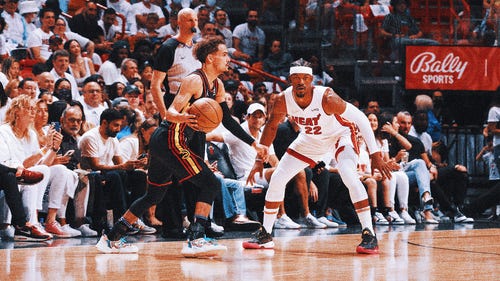
Minnesota Timberwolves: Will Three-Point Shooting Be Their Downfall?

In a league that’s now driven by the three-point shot, have the young Minnesota Timberwolves got enough shooters to succeed?
As if expectations for a stacked young Minnesota Timberwolves team weren’t high enough already, the arrival of Tom Thibodeau as the team’s head coach has propelled the anticipation to new heights.
Not only do Minnesota have an embarrassment of riches in terms of young players with star potential, but they have a mix of talent that would seem to suit the eye of the man now in charge of Xs and Os.
Karl-Anthony Towns didn’t let anybody down in a stellar Rookie of the Year winning season, thriving under Kevin Garnett‘s tutelage, and looking every bit the player who many had long since billed for an eventual MVP career trajectory.
Highly skilled on both ends, he’ll be Thibodeau’s anchor piece.
Another former first overall pick, Andrew Wiggins has continued to steadily grow into the player that his pre-draft hype had built him up to be.
Following a 20-point-per-game season in only his second year as a pro, the former Jayhawk will be looking to kick on offensively, while continuing to showcase his stellar defensive instincts.
Add into the mix a collection of supporting players that includes slam dunk king Zach LaVine, defensive stopper Gorgui Dieng, wily Spanish guard Ricky Rubio and fifth overall pick Kris Dunn, and it would seem that the sky is the limit for Minnesota, and sooner rather than later.
As a roster that’s well-balanced in most facets of the game, there’s one glaring weakness that seems like it could stand to hold the Timberwolves back.
While virtually all of the NBA’s best teams have made three-point shooting a central element of their gameplan, that option won’t be so easily afforded to Minnesota.
As the numbers from the 2015-16 season can attest, the problem facing the Wolves is neither just volume or efficiency, but a combination of the two.
For last season, Minnesota made only 33.8 percent of their three-pointers (26th in NBA) on just 16.4 attempts per game (29th in NBA).
By removing Kevin Martin, the team’s third best player in terms of three-point percentage last season, Minnesota’s percentage would have dropped to 33.5 percent and only good enough for 28th in the league.
The summer addition of Brandon Rush, a career 40.3 percent marksman from distance should help, but otherwise, Thibodeau and his coaching staff are relying on growth from within.
The head coach has acknowledged that the process for his team will have to begin with a willingness to take and create more deep opportunities. As he noted in conversation with ESPN’s Brian Windhorst:
“We gave up nine [3-pointers] a game, and we made only five and a half. That’s like starting the game 10 points behind.”
More from Hoops Habit
Saying that is one thing, but actually seeing his team take and make more shots will be a different proposition.
Of the returning Timberwolves for the coming season, Zach LaVine would appear to be the team’s best option from distance.
In spite of question marks over his range coming out of UCLA, LaVine took a big step forward in terms of efficiency last season, making more than 38 percent of his attempts from behind the arc.
If that’s a sign of concrete progress, it’ll be a great help to his team, but if it’s an anomaly they’ll be in trouble.
Shooting at 34.1 percent from range, Minnesota’s talismanic center Towns was the team’s fourth-best shooter in 2015-16 and it wouldn’t come as that much of a surprise if he was to build on that in the new campaign.
There’s a major problem in that for the Timberwolves though, as Thibodeau, himself may have recognized, if his comments from a recent Fox Sports North piece are anything to go by.
“We got to take the right shots, and we got to make the extra pass, but we have to get pressure on the rim to force the defense to collapse. If we do that, we’ll get good rhythm 3s.”
For as beneficial as Towns’ ability to stretch the floor could be in bursts, he presents his team’s biggest offensive threat, particularly down low around the basket. Moving Towns away from that spot could do less for Minnesota’s shooting prospects than keeping him inside as a focal point.
As Thibs alluded to, a player of KAT’s quality inside, capable of drawing double teams, will create open shots if his teammates can keep the ball moving.
This is a strategy that could become incredibly reliant on role playing wings like Brandon Rush and Shabazz Muhammad knocking down jumpers, but considering their roster options, that could be Minnesota’s best bet.
The Timberwolves don’t have to win games with their three-point shooting, but they have to be good enough to ensure that they don’t lose due to the long ball.
It seems certain that Minnesota will see some significant improvement this season, but whether three-point shooting will be a part of that growth remains to be seen.
This article originally appeared on








